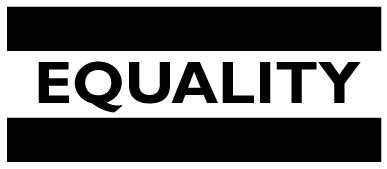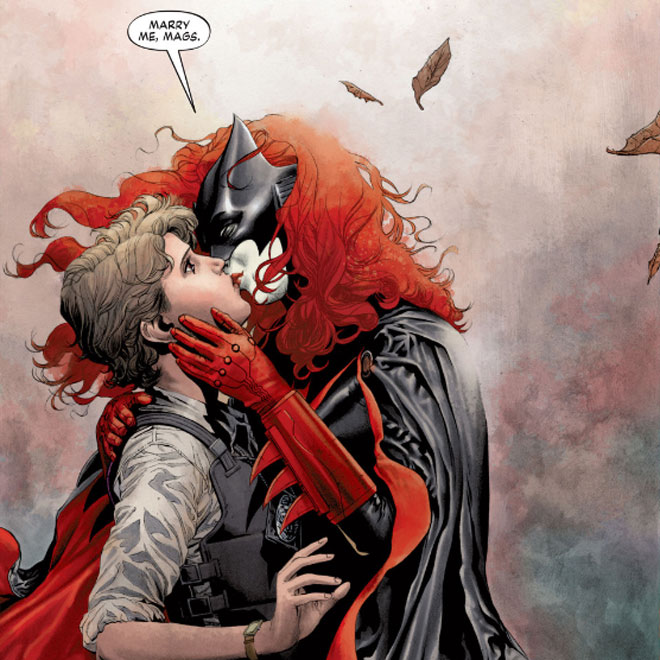Comic books have always had an impact on society, from helping children learn the dangers of landmines in third world countries (Batman Death of Innocence: The Horrors of Landmines) to the coming out of superheroes (Earth Two issue 2 and Astonishing X-Men issue 51). Comic books have always played a role in cultural shifts during troubling times, and also helped society in becoming more tolerant to differing views, ideals, and ways of life.
The issue at hand is not necessarily the impact of equality in comic books, because honestly that is a more open-ended situation. The problem at hand is a portion of the equality movement. What we are going to look at is the impact of feminism and Lesbian, Gay, Bisexual, and Transgender(LGBT) issues in comic books. Are women and LGBT’s represented the same as their male and straight counterparts? Are women and LGBT’s treated equally in comic books? Do women and the LGBT community play the same roles that men play in comics? The answer to these questions is simple; “no.” Women and LGBT’s are grossly misrepresented in comic books, even into the 21st century. The gay community has struggled for acceptance in all areas of life. From film to literature, and from television to comic books, the LGBT community has been fighting for equal rights, and that struggle is all too real in comic books when only a handful of gay characters exist. The problem is the fact that comics are being written by men, for younger men and boys, who are mostly straight, and the writer’s distortion of women and men cause readers to form hostility and even eventually to the creation of stereotypes which may lead to forms of sexism and plausibly homophobia.
When we look at the topic of women in comics, it’s very important to realize that the majority of comic books are read and written by men. Being an avid comic book collector, I have first hand experience with this issue. In the four years that I have frequented my two favorite local comic shops, I can count on one hand the number of women I have seen perusing the aisles. Another issue that I have noticed is that women in comics are extremely over-exaggerated. From their breast size, to the depiction of their buttocks, women are constantly misrepresented. Marriage for a female homosexual character can also be quite the hot topic with DC Comics.
As mentioned before, the LGBT community has not had the same level of acceptance as women. Their representation has been a constant uphill battle for equality. In recent years, we have seen the “coming out” of ironic characters such as Alan Scott (Green Lantern), and the writer, James Robinson, once stated that ‘“It’s a realistic depiction of society.” New York Post commented that “You have to move with the times.” Comic books should help with social movements and help shape the reader’s mind to become more accepting and understanding to the fact that they’re different then their own ways of life. If comics could integrate more LGBT characters, then the LGBT community could become better represented.
After Golden Age’s Green Lantern, Alan Scott, “came out of the closet” in the comic series Earth Two, it was rumored that Batwoman would eventually become married to her significant other, Maggie Sawyer. When news of this rumor became true, many in the comic book community were ecstatic and excited to see how DC would let this play out and the outcome this would bring to the Bat-World, along with the extended DC Universe (Melrose, Kevin). Unfortunately, this was not the case for Batwoman and the women’s agenda for equality in marriage. DC Comics came to Batwoman writer, JH Williams III, and told him that DC was no longer in support of his ideas for Batwoman and the marriage of Kate and Maggie. JH Williams ended up writing on his own personal site that
“Unfortunately, in recent months, DC has asked us to alter or completely discard many long-standing storylines in ways that we feel compromise the character and the series. We were told to ditch plans for Killer Croc’s origins; forced to drastically alter the original ending of our current arc, which would have defined Batwoman’s heroic future in bold new ways; and, most crushingly, prohibited from ever showing Kate and Maggie actually getting married. All of these editorial decisions came at the last minute, and always after a year or more of planning and plotting on our end.” (JH Williams III)
When this news was released, many of the comic book community was outraged and very disappointed/upset with DC. The writer JH Williams III and Haden Blackman ended up walking off the title in a form of protest. Unfortunately, this move by DC really ended up hurting business and their representation among comic book readers and even a large majority of people that are pro-marriage equality. After the Batwoman fiasco, the Green Lantern from Earth Two also just happened to be killed off when writer James Robinson stepped off the book (Alan Scott has since made his return in Earth Two issue 22, April 2nd, 2014). I remember a lot of speculation around whether the character was killed off because DC wasn’t completely supportive of writer Robinson and his agenda for the continuum of a classic characters altered origins or if it was Robinson saying good-bye to a character he changed. It was a little concerning though, that the character picked to represent the LGBT community was a second-tier character that not many non- comic book readers would be familiar with. If DC truly wanted to help equality and the LGBT community, they should have made a well-known character homosexual. For example, instead of Green Lantern Alan Scott, why not Green Lantern Hal Jordon?
For women in comics it’s a very different situation. You have heroes that range from Wonder Woman to Black Widow, and while most female characters come from all different backgrounds, they are not often represented the same. As stated in Some of The Greatest, Most Popular Comic Books Are Feminist, “The original Wonder Woman comics were even more politically engaged. Creator William Marston believed that women were better suited than men to rule, and his comics were devoted to “explicit feminist moralizing.” Another example is how Buffy: The Vampire Slayer has always focused on a feminist protagonist, and also dealt with all sorts of feminist challenges (Some of The Greatest, Most Popular Comic Books Are Feminist, The Atlantic). Recently the news of the introduction of a Muslim Ms. Marvel was a serious cultural shift in comic books (Willow G., Wilson) and was major equality moment for both women and people of different faiths.
If more characters could gain the acceptance of the already popular female characters, then the lesser-known characters such as Power Girl, Zatanna, Wanda Maximoff (also known as The Scarlet Witch), and Emma Frost could have better representation. I mention these characters not only due to their relevance, but also because each of these characters’ costumes show off their extreme cleavage. It is completely unnecessary for a woman to have that much of her upper body exposed, be it in comic or film. Women in comics should not have their breasts exposed just in hope that the book will sell because of this factor.
As the times change and society shifts from different views, so should comic books. When new social issues rise and fall, comics should be there with them. Comics can help men, and women, of all ages become more accepting and tolerant to the changing world around them. Writers (and artists) must take into consideration the amount of power and persuasion they have and as a great writer once said, “With great power, comes great responsibility.”
Works Cited
2) jhwilliams3.com. JH Williams III, n.d. Web. 24 Mar. 2014.
<http://www.jhwilliams3.com/>.
3) Melrose, Kevin. “‘Batwoman’ #17 Puts Marriage Equality in the Spotlight.”
Comic Book Resources. Comic Book Resources, 20 Feb. 2013. Web. 26 Feb.
2014. <http://www.comicbookresources.com/?page=article&id=43851>.
4) “Some of the Greatest, Most Popular Comic Books Are Feminist.” The Atlantic.
N.p., n.d. Web. 25 Feb. 2014. <http://www.theatlantic.com/sexes/archive/
2013/08/some-of-the-greatest-most-popular-comic-books-are-feminist/278593/>.
5) Wilson, G. Willow. Ms. Marvel (2014) #1. New York: Marvel, 2014. Print.



